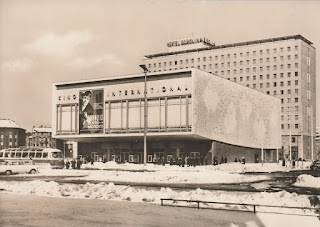
100 years ago Fritz Wilms and Max Bischoff started building a residential house with a movie theater in Berlin-Weissensee.
It was first cinema by the architect Fritz Wilms (1886-1958), but not the last one. He designed more than 15 cinemas in Berlin between 1920 and 1951. The cinema opened on September 4th, 1920 with 456 seats and the name Decla-Lichtspiele. Decla (originally Deutsche Eclair) was a German film production and distribution company. In 1921 Decla was absorbed into the UFA-Company and the cinema changed its name in UFA-Theater. After World War II UFA-company and this cinema were damaged. The cinema opened at Christmas 1948 with the new name Toni Film-Bühne, Toni because it is situated at the Antonplatz. In 1979, the last privately-owned cinema in East Berlin had to give up, because of high investment needed. The district film directorate Berlin took over the cinema and opened three years later the converted hall with 277 seats, now with the name Kino Toni.
In 1992 the film director Michael Verhoeven bought the Toni, renovated it and expanded it with a small hall Tonino. Now it is called Kino Toni & Tonino.
For more pictures and information look at Kinokompendium.
I love this busy street scene with typical East German vehicles.









